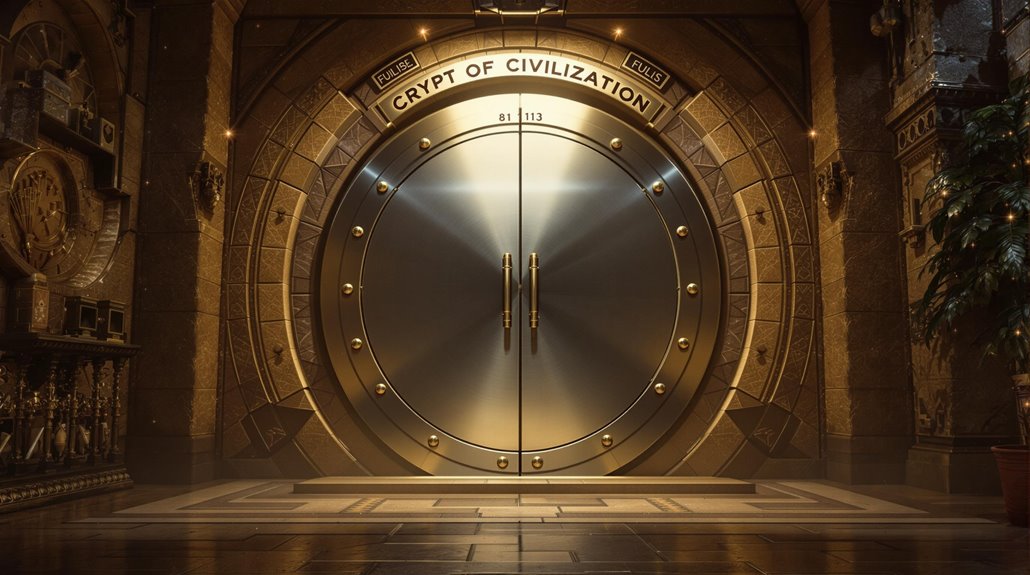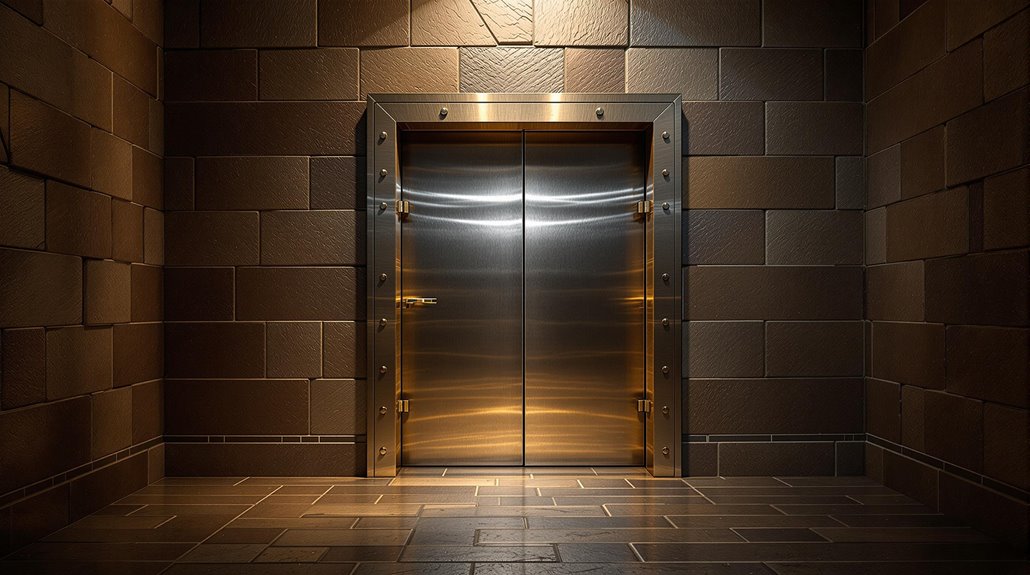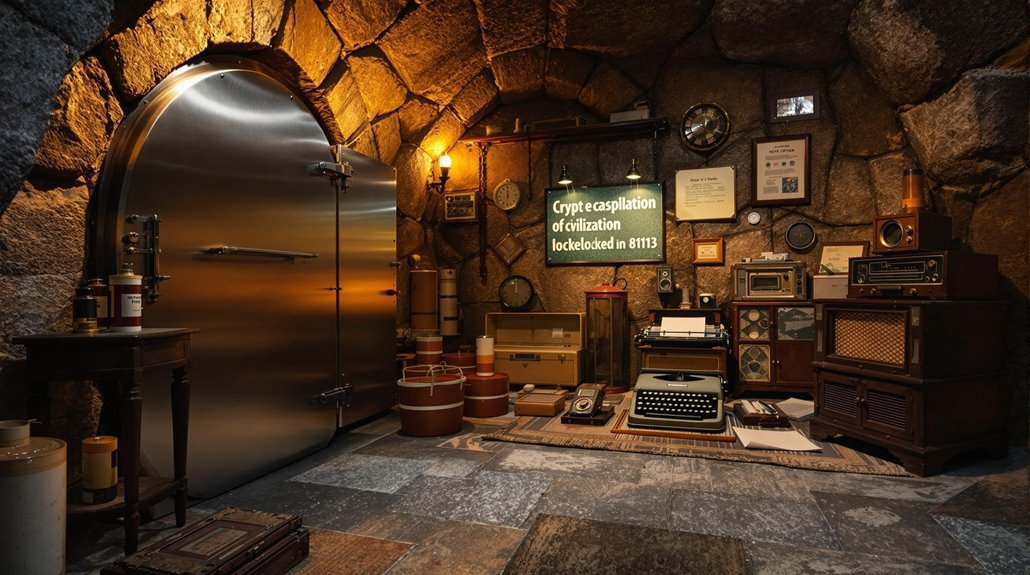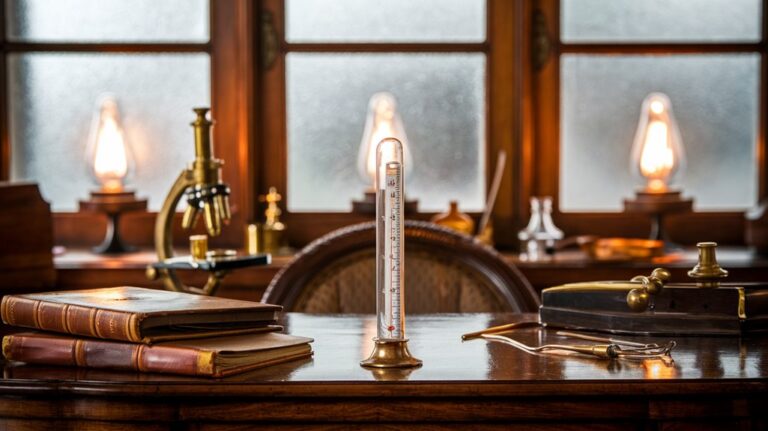A Time Capsule Locked Until 8113? Inside the Crypt of Civilization
You've probably never considered what archaeologists in the year 8113 will think of our civilization, but Dr. Thornwell Jacobs did. In 1936, he created the world's most ambitious time capsule: a sealed vault designed to preserve a complete snapshot of human knowledge and culture for six millennia. Hidden beneath Oglethorpe University in Atlanta, the Crypt of Civilization isn't just any time capsule – it's a precisely engineered chamber that will tell our descendants exactly who we were.
The Visionary Behind History's Most Ambitious Time Vault

While many people dream of preserving history, Dr. Thornwell Jacobs turned that dream into an unprecedented reality. As a Presbyterian minister, professor, and president of Oglethorpe University, you'll find that Jacobs' motivations stemmed from his frustration with the limited information available about ancient civilizations, particularly Egypt.
In 1936, he conceived the Crypt of Civilization, a groundbreaking project that would later earn him recognition as the father of modern time capsules. His vision went far beyond simple preservation – he wanted to capture a complete snapshot of 1930s life for future generations. His collaboration with first microfilm camera inventor Thomas Kimmwood Peters helped bring worldwide attention to the project. The Crypt was designed to remain sealed until 8113, representing an ambitious 6,177-year time span.
The historical significance of his work can't be understated, as it inspired numerous imitators, including the Westinghouse Company's famous 1939 World's Fair time capsule, which actually coined the term "time capsule" itself.
Building an Eternal Chamber: Design and Construction
Beneath the foundation of Oglethorpe University's Phoebe Hearst Hall lies one of history's most sophisticated time capsules.
You'll find this remarkable chamber 7 feet underground, carved into solid granite bedrock where a swimming pool once existed.
The design challenges were met with cutting-edge solutions for its time. To guarantee structural integrity, builders encased the 20x10x10-foot room with thick stone walls, including a 7-foot roof and 2-foot floor.
They lined the interior with porcelain-enamel plates set in waterproof pitch, while stainless steel receptacles filled with inert nitrogen protect the contents from oxidation. The impressive collection includes 640,000 microfilmed pages of humanity's most significant works.
The National Bureau of Standards advised on technical specifications, resulting in a fortress-like vault that's designed to withstand millennia. The project's construction and microfilming were overseen by Thomas Kimmwood Peters.
A windmill generator stands ready to power future visitors' access to the preserved materials.
Preserving the 1930s: Notable Contents and Artifacts
Inside the Crypt of Civilization, you'll find a vast collection of artifacts that paint a vivid portrait of 1930s life and culture.
The cultural significance of this collection ranges from simple everyday items like dental floss and a woman's purse to technological marvels of the era, including typewriters, radios, and televisions.
The 1930s toys preserved within showcase popular characters like Donald Duck and the Lone Ranger, while historical recordings capture the voices of world leaders such as Hitler, Stalin, and Roosevelt.
You'll discover entertainment pieces from the period, including the original "Gone With the Wind" script and phonograph records.
Scientific and educational materials aren't forgotten either – there's even a Language Integrator machine designed to teach English to future generations who might discover this remarkable time capsule.
The preservation techniques were cutting-edge for the time, with all microfilmed materials stored in stainless steel receptacles filled with nitrogen to prevent deterioration.
The crypt's foundation rests on solid bedrock foundation, ensuring its contents remain secure for thousands of years to come.
Scientific Methods for 6,000-Year Preservation
To guarantee the preservation of artifacts for an astounding 6,000 years, the Crypt of Civilization employs multiple cutting-edge scientific methods from the 1930s.
You'll find innovative oxygen-free storage systems using nitrogen-filled stainless steel containers with glass linings, following recommendations from the Bureau of Standards in Washington.
The crypt's archival techniques include storing documents on both cellulose acetate microfilm and metal film backups, protected in hermetically sealed containers.
You'll discover these materials housed in an impressively engineered structure – a former swimming pool converted into a fortress with two-foot thick stone floors, seven-foot thick roof, and walls lined with vitreous porcelain enamel.
The space is completely waterproof and sealed with a welded stainless steel door. For future access, you'll even find microreaders powered by a windmill-operated generator.
Similar to how mineral entombment helps preserve soft tissues in fossils, the crypt's sophisticated containment systems aim to protect its contents from degradation over millennia.
Just as ice patches preserved ancient forests for thousands of years, these preservation methods are designed to maintain artifacts in pristine condition.
The Legacy That Sparked a Global Movement

When Dr. Thornwell Jacobs conceived the Crypt of Civilization in 1936, he couldn't have known he'd spark a worldwide revolution in cultural preservation. His vision, detailed in Scientific American, captured global fascination and inspired countless similar projects, especially the Westinghouse Time Capsule at the 1939 New York World's Fair.
Drawing inspiration from King Tutankhamun's tomb, Jacobs envisioned a repository that would preserve modern civilization for millennia to come. The massive chamber was built in an old swimming pool basement, ensuring maximum structural integrity.
You'll find the Crypt's influence everywhere – it's credited with popularizing the very term "time capsule," coined by George Edward Pendray.
The project's ambitious scope has led to extensive media coverage from major networks and helped establish the International Time Capsule Society in 1990.
Today, you can see its legacy in thousands of time capsules worldwide, all following the preservation principles Jacobs pioneered. His innovative approach to protecting human knowledge continues to inspire new generations of preservationists.











